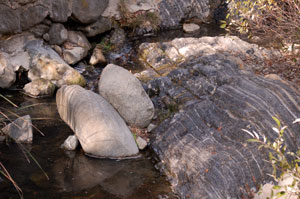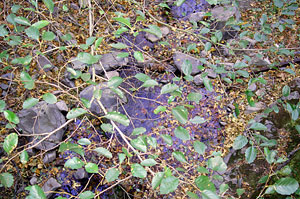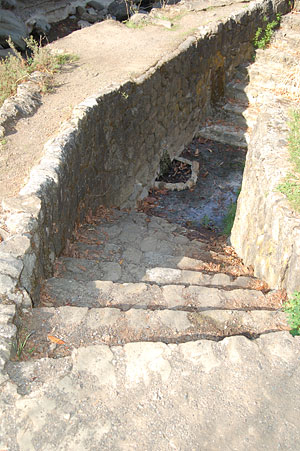Park hours are daily from 8am until one-half hour after sunset.
Parking: $6
Youth Science Institute
Founded in Alum Rock Park in 1953, Youth Science Institute provides year-round school and public programs and interpretive services in the Park, thanks to a long-term partnership with the City of San Jose.
YSI is a 501(c)3 non-profit organization that partners with nature to teach science to 33,000 pre-school through 12th grade students throughout Silicon Valley each year. YSI school programs, after-school programs, and summer camps fill the gap that is present in science education today to inspire in students enthusiasm for science and love of learning, to develop the critical thinking skills they need for academic success, and to forge connections with nature that foster their personal health and earth stewardship.
YSI has two additional Science and Nature Centers at Sanborn Park in Saratoga and Vasona Lake Park in Los Gatos. Each Center is open to the public and features live animals and interactive exhibits, as well as year-round programs.
Youth Science Institute
16260 Penitencia Creek Road
San Jose, CA 95127
Open All Year, Tuesday – Sunday, 12:00 noon – 4:00 PM or by appointment.
(Closed on Sunday from October-April)
Special thanks to the City of San Jose’s Alum Rock Park Staff, and to YSI Staff John Harshman, Dorothy (DJ) Johnson, Bonnie LeMat and Susanne Mulcahy for their participation in this Exploration.
Robin Marks and Lauren Sommer contributed to this Exploration.
Remnants of Volcanic Days
 These rocks layers, once stacked on each other vertically, now lie on their sides in the creek, evidence of Alum Rock's tectonic history. Alum Rock got its name from a powder that coats some of the rocks in the park, which early visitors to the area mistakenly thought was alum. That powder is, in fact, made of sulfur, gypsum, and other substances, and it’s a hint to the area’s volcanic history.
These rocks layers, once stacked on each other vertically, now lie on their sides in the creek, evidence of Alum Rock's tectonic history. Alum Rock got its name from a powder that coats some of the rocks in the park, which early visitors to the area mistakenly thought was alum. That powder is, in fact, made of sulfur, gypsum, and other substances, and it’s a hint to the area’s volcanic history.
Other clues to Alum Rock’s geologic activity abound, some more obvious than others. Perhaps most notable are the springs you’re likely to spot shortly after you come in. Bubbling up from underground, the water is warmed by heat that still remains in the earth from the volcanoes that were once active here. Stop at any of the small shelters that house "faucets" of these springs, and you’ll get a whiff of the sulfur and other aromatic minerals that have dissolved into the hot water as it flows up from the ground.
Hike around the grounds and you'll encounter some of the other, more subtle evidence of the park's busy geology, as well as take in its bountiful wildlife offerings. Central to the hiking trails is a canyon, which hosts a creek (some of it in the form of those bubbling mineral springs) running through it. Granite and sandstone boulders populate the canyon, having been washed down from the hilltops above, evidence of powerful storm activity.
Like so many twisted landscapes in northern California, the rock layers in these hillsides are chronologically upside-down, with the youngest swaths at the bottom, the oldest on the top. That’s the result of the steady crunching of tectonic plates over millions of years, folding the earth's crust over on itself.
One Canyon, many Climates
 Leafy trees, soft mosses, and other water-loving plants populate the riparian area next to the creek. The resulting topography and the mineral springs of Alum Rock lend the park a variety of niches and microenvironments. Spend a day exploring, and you'll see that the canyon sides boast different habitats, owing to the different climates of their north- and south-facing slopes. Forests with oak, sycamore, and other large trees populate the damper, shadier north-facing sides. Deeper in the canyon, the trees are joined by ferns and horsetails, which soak up the moisture of the creek. On the drier south-facing slopes, low bushes, shrubs, and grasses make a scrubby chaparral.
Leafy trees, soft mosses, and other water-loving plants populate the riparian area next to the creek. The resulting topography and the mineral springs of Alum Rock lend the park a variety of niches and microenvironments. Spend a day exploring, and you'll see that the canyon sides boast different habitats, owing to the different climates of their north- and south-facing slopes. Forests with oak, sycamore, and other large trees populate the damper, shadier north-facing sides. Deeper in the canyon, the trees are joined by ferns and horsetails, which soak up the moisture of the creek. On the drier south-facing slopes, low bushes, shrubs, and grasses make a scrubby chaparral.
These numerous environments provide inviting homes for a huge array of critters, from the small and squiggly to the large and furry. The relatively unpolluted stream teems with insects that often become the subjects of study (and squeamishness) for students at the nearby Youth Science Institute. Even the algae growing on rocks among the springs are enticing, sporting a rainbow of colors that reflect the minerals in their watery habitat.
The park's bird populations, which change with the seasons, also make it popular with the binocular set. Golden eagles and red-shouldered hawks are spotted regularly, along with hundreds of other species. And it's not unusual to see a deer or even a bobcat wander by the trail: the park's large acreage and moderate number of visitors mean that wildlife rules here.
Nature Springs Anew
 During the park's past life as a spa, bathers would settle into soaking pools like this one, hoping to gain some medicinal benefit from the spring's mineral waters. The ambiance of the park as a nature reserve is actually a somewhat recent development. Alum Rock, known until a century ago as "the reservation," has thrived as a popular outdoor playground since the early 1800s, even while ownership of the land comprising it shifted from Spain to Mexico to the U.S. With its many mineral springs, Alum Rock became a fashionable spa of sorts, eventually hosting a huge indoor swimming pool, private baths, concessions, a bandstand, and a restaurant.
During the park's past life as a spa, bathers would settle into soaking pools like this one, hoping to gain some medicinal benefit from the spring's mineral waters. The ambiance of the park as a nature reserve is actually a somewhat recent development. Alum Rock, known until a century ago as "the reservation," has thrived as a popular outdoor playground since the early 1800s, even while ownership of the land comprising it shifted from Spain to Mexico to the U.S. With its many mineral springs, Alum Rock became a fashionable spa of sorts, eventually hosting a huge indoor swimming pool, private baths, concessions, a bandstand, and a restaurant.
From the mid-1800s until just decades ago, people flocked to Alum Rock from around the country to soak in the park’s warm mineral waters, which many claimed had medicinal benefits. Some Sundays, as many as 10,000 visitors were swarm Alum Rock’s hillsides and hot pools. The park had so many visitors that, by the early 70s, the native plants and animals were nearly overrun. In response, San Jose decided to return Alum Rock back to its more natural state. The city demolished the pool, removed many of the buildings, and closed some areas of the park. As a result, natural habitats in the park have flourished with the return of many species of birds, insects, and other wildlife.
As John Harshman, a teacher at the Youth Science Institute described it, "Nature is about as undisturbed here as it can be in the middle of an urban area." Natural phenomena continue to exert forces of change on Alum Rock's landscape. The park’s original entrance was closed in 2000 due to a storm-induced landslide. And in October 2007, nearby residents were shaken by an earthquake centered just five miles from Alum Rock. As a result, one of its previously idle springs flowed back to life-- perhaps a reminder that nature can return to a place even when the potential for it seems to have dried up.
Alum Rock Park History, by Judy Thompson and Wikipedia: Alum Rock Park served as sources for this article.
Events in Briones Regional Park
The East Bay Regional Park District offers a number of activities in Briones Regional Park and many other nearby parks.
Learn More About Wildlife
If you're interested in learning more about the wildlife of the East Bay, the Tilden Nature Area Programs offers many options in Berkeley's Tilden Regional Park. Take a guided hike with a naturalist to search for the local flora and fauna, including the local California Newts.
Volunteer in Briones
Briones Regional Park and many others rely on local volunteers to maintain the trails and do habitat restoration. There are even opportunities in their wildlife program. Learn more about how to volunteer.
Latest Visitor Photos

 The lush Penitencia Creek, which bisects the Park, flows year-round. Once home to the Ohlone Indians, Alum Rock Park features rugged ridges with spectacular views of the Santa Clara Valley, geologic formations including mineral springs and evidence of seismic events, and a variety of native flora and fauna.
The lush Penitencia Creek, which bisects the Park, flows year-round. Once home to the Ohlone Indians, Alum Rock Park features rugged ridges with spectacular views of the Santa Clara Valley, geologic formations including mineral springs and evidence of seismic events, and a variety of native flora and fauna.

